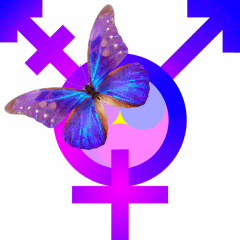Gender
Will Straight Men and Women Date a Trans Person?
Evidence suggests the answer is often no—but why not?
Posted April 2, 2021 Reviewed by Devon Frye
Key points
- Trans persons are seldom viewed as desirable dating partners, recent research finds—especially by straight men and women.
- Overall, gender minorities lag behind sexual minorities in terms of the societal attitudes toward them.
- When considering whether they would date trans individuals, respondents appear to prize masculinity more than femininity.

Alphonso David, the Human Rights Campaign Foundation President, noted that in the United States, “at least 37 transgender and gender non-conforming people were victims of fatal violence” in 2020—far more than has been recorded in previous years. But anti-trans violence is not just physical but also psychological, a symptom of the transphobia that is prevalent in our society.
The subtlety of this negativity is manifested in a variety of ways, including during interpersonal interactions—such as our willingness to date a trans person. Who we date (or don't date) can be tainted by our susceptibility to societal attitudes. “One such attitude that may be restricting the roll call of those we consider acceptable dating partners may be cisgenderism… the ideology that views cisgender identities as natural and normal, thereby delegitimizing trans identities and expressions.”
Researchers Karen Blair and Rhea Hoskin (2019) addressed the dating preferences of nearly a thousand online participants with the question, “Who would you consider dating?” Options were cisgender man, cisgender woman, trans man, trans woman, and gender queertrans. The participants were predominantly young adults, most of whom were straight, cisgender individuals (their current gender identity matches the gender they were assigned at birth) residing in Canada and the United States.
Extremely few—less than 3 percent—of straight men and women would consider dating a trans individual, regardless of whether that person matched their straight sexual orientation (a transman born female for straight men; a transwoman born male for straight women) or their gender preference (a transwoman for straight men; a transman for straight women). Unfortunately, participants were not explicitly asked about their reasons for choosing a dating partner.
Gay men were more willing than straight men (12 percent vs. 3 percent) and lesbian women were more willing than straight women (29 percent vs. 2 percent) to date a trans person. Overall, gay men were far more likely than lesbians to exclude individuals based on their trans status. Both gays and lesbians were, however, considerably more likely to date a trans person consistent with their preferred gender presentation rather than their preferred genitalia (transmen for gays, transwomen for lesbians).
We do not know the importance of whether that dating partner had altered their genitalia through surgery to match their trans identity. That is, how important is it to a gay man that his transman date does or does not have a penis or to a lesbian woman that her transwoman date has or does not have a penis? These issues require further investigation, beginning with intensive interviews with all relevant participants.
As one might expect, bisexual, queer, and nonbinary individuals were most likely to date a trans person—slightly over half. Yet, one might wonder why this was not closer to 100 percent. Despite the commonly held assumption that bisexual, queer, and nonbinary individuals have no or few sexual or gender preferences, this belief is, I believe, mistaken. Indeed, most have a favorite sex and gender of the person they desire to have as a partner. For example, regarding bisexuals, research clearly shows that relatively few bisexuals are evenly divided in their sexual preference between males and females; rather, they have a clear preference for one or the other (Savin-Williams, 2021). So, too, although gender preferences are less frequently investigated, it appears that many bisexuals have a decided predilection for the gender presentation (masculine or feminine) of their dating partner. Bisexuals who display no sexual or gender preferences are technically pansexuals; in the current study, pansexuals might have identified as queer or nonbinary.
Perhaps the most surprising finding in the Blair and Hoskin study is that a large number of queer and nonbinary individuals would not date their “own kind.” I admit, however, that the number of these individuals is difficult to determine because they were combined with bisexuals in the data analyses. The authors noted that the number of trans-identified individuals was too small to find patterns.
I believe we should not be surprised that even though individuals might not self-identify as male, female, masculine, or feminine, that would not necessarily preclude them from preferring a particular sex or gender presentation in their dating partner. These are issues largely unexplored in psychological research, consistent with Blair and Hoskin’s conclusion: “More research is needed to clearly identify and understand the reasons behind people’s unwillingness to date trans people.”
One final observation noted by the authors was expected and yet potentially distressing for those of us who value the equality of all gender expressions and identities. Considering the sample as a whole, for those who were willing to date a trans person, “a pattern of masculine privileging and transfeminine exclusion appeared, such that participants were disproportionately willing to date trans men, but not trans women, even if doing so was counter to their self-identified sexual and gender identity (e.g., a lesbian dating a trans man but not a trans woman).” We have a long distance to travel to achieve sex and gender equality, and sexual minorities might get there before gender minorities.
References
Blair, K. L., & Hoskin, R. A. (2019). Transgender exclusion from the world of dating: Patterns of acceptance and rejection of hypothetical trans dating partners as a function of sexual and gender identity. Journal of Social and Personal Relationships, 36, 2074-2095. doi:10.1177/0265407518779139
Savin-Williams, R. C. (2021). Bi: Bisexual, Pansexual, Fluid, and Genderqueer Youth. New York: New York University Press.




